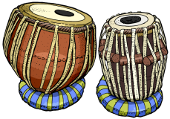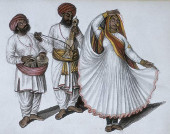Letter from India
 The spring has sprung and Wales is looking beautiful again. The worst of the winter weather is behind us and a new year is truly underway. I was fortunate this winter to be able to travel over to India and complete a lifelong ambition of hiking in the Great Himalayan Mountain Range. I left for my travels before the festive season and returned in the middle of January.
The spring has sprung and Wales is looking beautiful again. The worst of the winter weather is behind us and a new year is truly underway. I was fortunate this winter to be able to travel over to India and complete a lifelong ambition of hiking in the Great Himalayan Mountain Range. I left for my travels before the festive season and returned in the middle of January.
My trip started in the North of this great country as I travelled to the Northern state of Himachal Pradesh and hiked my way through valleys and relaxed next to Hot Springs in the deep, snow capped valleys of the Himalayas. My interest in the local culture was pricked by the fact that I´d arrived right in the middle of Wedding season. Horns were sounded, unfamiliar drums were played, people clapped and rattled as they paraded through the streets. The atmosphere was electric and the sound would carry through the alleyways and side streets of this small village calling every ones attention to the celebration.
?>
I saw some incredible sights in India and have been deeply touched by the culture, music and traditions of the different parts of the country that I was lucky enough to travel to. One of my main interests in India, being a musician, apart from the mountains was obviously the music and as a drummer I was particularly interested in the different types of drums used throughout India. The first drums I´d see on this trip were the Dhol drums played by the Sikhs in Punjab. These drums have been made famous in the UK by a large Sikh population here and famous collaborations with UK artists such as UB40.
 Tablas are the classical Indian drums, played with hands, which you can see/hear in many Indian Classical pieces. They represent the pinnacle of any drummers´ ability to express themselves. What I learnt on this trip was that the drums, unlike the African and Celtic drums that I use, are skinned with four layers of skin. I watched a drum maker one afternoon and saw him fit together one of these drums. I was most interested as I skin my own drums and was amazed at the different techniques and tools that he used to perform his task.
Tablas are the classical Indian drums, played with hands, which you can see/hear in many Indian Classical pieces. They represent the pinnacle of any drummers´ ability to express themselves. What I learnt on this trip was that the drums, unlike the African and Celtic drums that I use, are skinned with four layers of skin. I watched a drum maker one afternoon and saw him fit together one of these drums. I was most interested as I skin my own drums and was amazed at the different techniques and tools that he used to perform his task.
In the South of India they too use several layers of skin to great effect on their traditional stick drums. I was immediately transfixed and had to speak with the performers after a show that I witnessed around Christmas time in Kerala. They explained to me that the drums were skinned with four layers of skin, like the Tabla. I found this incredible. A sound so loud as to rival the most impressive of African Drums!
I came home to Wales with a bagful of new percussion and instruments unfamiliar to many of my musician friends. I was able to get a taste of India this time round and returned home much better placed to appreciate a very different, colourful and creative musical culture which can be enjoyed right here in the UK as we have a healthy population of nationalized Indians. For now though I´ll continue my studies in the Drums of the World and the Celtic Bodhran Drums with renewed vigor.
Regards everyone,
Aaron





